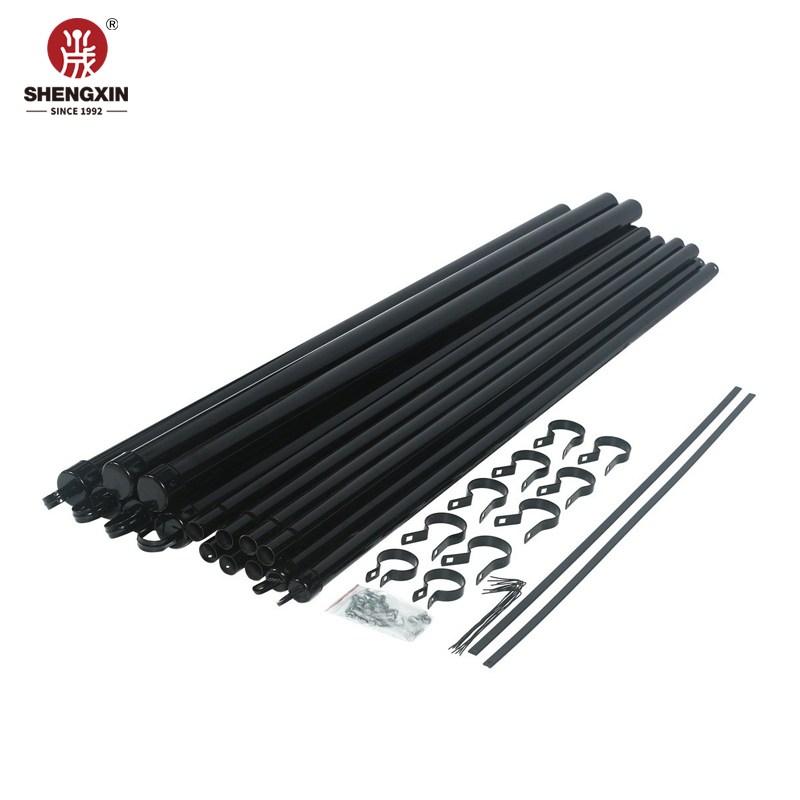
Dec . 05, 2024 16:54 Back to list
Affordable Temporary Fencing Solutions for Construction Sites and Project Security
Temporary Fence for Construction Sites A Necessary Investment
In the bustling world of construction, safety and security are paramount. Whether it's a residential project in the heart of a city or a large-scale commercial development, temporary fencing serves as a crucial barrier that protects not just the construction site, but also the workers, passersby, and the materials being utilized. This article explores the importance of temporary fencing for construction sites, along with considerations and cost factors that influence its installation.
Why Temporary Fencing is Essential
The primary purpose of temporary fencing is to create a secure perimeter around the construction site. This barrier serves several important functions
1. Safety Construction sites often contain hazardous materials and equipment. A temporary fence helps keep unauthorized individuals, especially children, away from dangerous areas. By restricting access, contractors can minimize the risk of accidents and ensure a safer working environment.
2. Security Thefts and vandalism can pose significant challenges to construction projects. Valuable equipment, tools, and materials are often left unattended, making them prime targets for theft. Installing a temporary fence reduces the likelihood of such incidents, providing an added layer of security during off-hours.
3. Liability Protection In the event of an accident or injury occurring on-site, having a designated perimeter can protect property owners and contractors from liability claims. When a site is clearly marked and restricted, it helps to demonstrate due diligence in maintaining safety standards.
4. Site Management Temporary fencing also assists in managing the logistics of a construction site. It clearly delineates where construction is taking place, allowing for better crowd control and ensuring that the flow of traffic around the site remains organized and safe.
Types of Temporary Fences
There are various types of temporary fencing available for construction sites, each catering to specific needs and requirements
- Chain Link Fencing This is one of the most common types of temporary fencing. It is durable and can withstand weather conditions while still offering visibility into the site. Chain link fences are often used for larger construction projects.
temporary fence for construction site quotes

- Hoarding Fences These solid fence panels offer better privacy and protection compared to chain link fences
. They are particularly useful in urban areas where construction sites are in close proximity to residential properties.- Banners and Signage In addition to physical barriers, incorporating banners or signage on temporary fences can serve the dual purpose of enhancing security while providing information about the project. This is particularly valuable for public relations and community engagement.
Cost Considerations
When it comes to temporary fencing for construction sites, costs can vary based on several factors
1. Length of the Fence The total linear footage required for the site will heavily influence the cost. Larger sites will naturally require more fencing material.
2. Type of Fencing The choice between chain link, hoarding, or specialty fences can significantly impact pricing. Hoarding tends to be more expensive due to its solid construction but provides additional benefits.
3. Rental vs. Purchase Many contractors opt to rent temporary fencing instead of buying it. Rental costs can be more economical for short-term projects, while purchasing may be a better investment for long-term use.
4. Installation Costs Depending on the complexity of the fencing layout, installation costs can vary. Some options may require professional installation, while others can be set up with minimal effort.
Conclusion
Investing in temporary fencing for construction sites is not just a matter of compliance but a vital step toward ensuring safety and security. By protecting the site and its surroundings, construction managers can focus on delivering projects on time and within budget while fostering a safer environment for everyone involved. As the construction industry continues to evolve, the role of temporary fencing remains ever-important, providing peace of mind and facilitating efficient site management.
-
Powder Coated Double Wire Mesh Fence - Anping County Shengxin Metal Products Co., Ltd
NewsAug.03,2025
-
Power Coated 358 Anti Climb Mesh Fence for Airports
NewsAug.03,2025
-
Powder Coated Double Wire Mesh Fence-Anping County Shengxin Metal Products Co., Ltd.
NewsAug.02,2025
-
Powder Coated Double Wire Mesh Fence | Anping County Shengxin Metal Products Co., Ltd
NewsAug.02,2025
-
Powder Coated Double Wire Mesh Fence for Germany Market-Anping County Shengxin Metal Products Co., Ltd|Durability, Aesthetics, Compliance
NewsAug.02,2025
-
Powder Coated Double Wire Mesh Fence-Anping County Shengxin Metal Products Co., Ltd.|Durability&Compliance
NewsAug.02,2025
